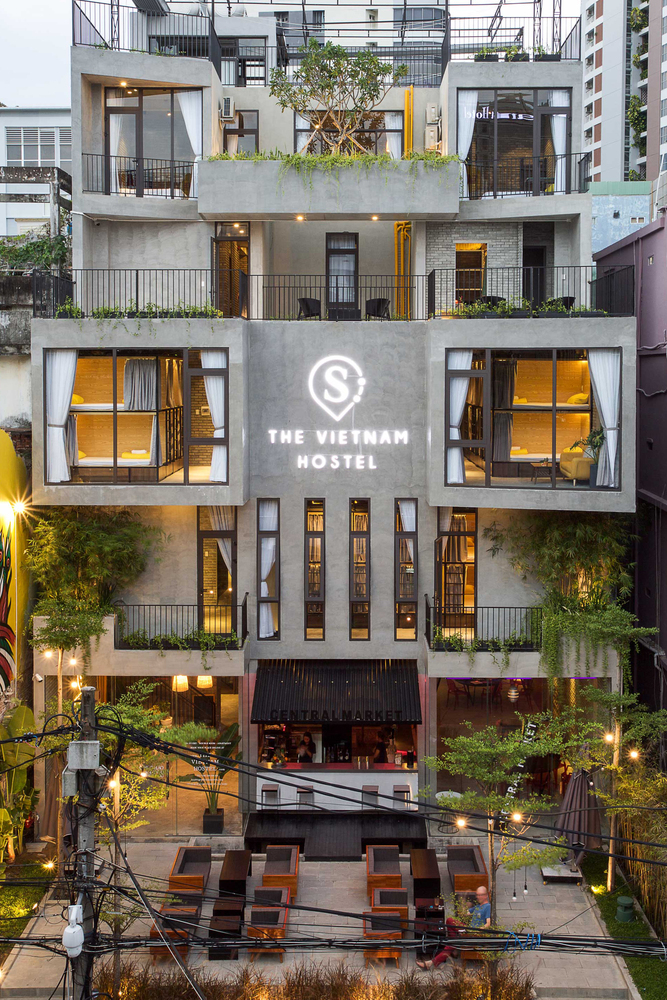Fortaleza Photography Museum Marcus Novais Arquitetura
2017-07-14 13:00
© Igor Ribeiro
伊戈尔·里贝罗


架构师提供的文本描述。在此之前,为巴西最大的摄影收藏之一设计一个新家的挑战被人们以极大的责任感接受,以展示这一历史记录。艺术收藏包括2000多件作品,其中包括史提夫·麦柯里(Steve McCurry)、亨利·卡地亚-布列松(Henri Cartier-Bresson)和马塞尔·高瑟罗(Marcel Gautherot),他们与当代生产中的其他顶尖艺术家共享空间,其中包括安德烈·利奥恩(AndréLiohn)、克劳迪娅·安杜杰尔(Clau
Text description provided by the architects. The challenge of designing a new home for one of the largest collections of photography in Brazil, until then kept away from public knowledge, was accepted with great sense of responsibility to display this historical record. The art collection consists of more than 2,000 pieces including historical names such as Steve McCurry, Henri Cartier-Bresson and Marcel Gautherot, who share space with other leading artists in contemporary production - among them are André Liohn, Claudia Andujar, Rosângela Rennó , and others.
© Igor Ribeiro
伊戈尔·里贝罗


这项工作的主题是一座现有建筑,面积约2 000平方米,位于巴西塞阿拉州首都福塔莱萨的Varjota社区。由于社会生活非常活跃,这个社区被认为是美食之极,也是城市部分公众的重要交汇点。
The subject of the work was an existing building with approximately 2,000 square metres of floor area, located in the Varjota neighborhood, in the capital city of Fortaleza, state of Ceará, Brazil. With a very active social life, the neighborhood is considered a gastronomic pole, and an important meeting point for part of the city's public.




作为一所英语学校-巴西-美国学院(IBEU)的前总部,这座建筑的结构跨度很大,天花板很低,开口不够大,可达性差,而且外观没有表现力,与街道几乎没有什么互动。在改造的第一阶段,这座建筑已被简化为其结构框架和外墙。
As the former headquarters of an English school, the Brazil - United States Institute (IBEU), the building had a structure with various spans, low ceilings, inadequately sized openings, poor accessibility and an inexpressive facade that had little interaction with the street. Already in the first stage of the retrofit, the building was reduced to its structural frame and external walls.
© Igor Ribeiro
伊戈尔·里贝罗


这座大楼共有五层楼。在主要通道,有一个宽敞的楼梯,标志着博物馆的入口轴线。与此相关的是,有一个残疾人坡道,以雕塑的方式在立面的构成中进行处理,并以一个作为小广场的空旷空间突出,其中有一棵来自东北半干旱地区的典型树,它将区域元素带入建筑物的清醒体积。一楼包括大堂,一个混合区,有咖啡店,图书馆,商店,厕所和临时展区。永久性展览位于一楼和二楼,平面相同,展区的空间完全清醒,但在区有一个令人愉快的垂直花园-人行道,它代表了一种在展览片段之间的过渡,几乎就像视觉上的休息。在三楼有一个部分覆盖的露台俯瞰城市,和一个多用途的房间,为活动,讲习班和讲座。所有的行政和支助环境都放在地下室,包括藏品的技术储备。
The building has a total of five floors. In the main access, there is a generous staircase that marks the entrance axis of the Museum. Associated with it, there is a ramp for people with disabilities, treated in a sculptural manner in the composition of the façade and highlighted by an empty space that works as a small square, which holds a typical tree from the northeastern semi-arid region that brings the regional element to the sober volumetry of the building. The ground floor comprises the Lobby, a hybrid area with a coffee shop, library, shop, toilets and the temporary exhibition area. The permanent exhibition occupies the first and second floors, with identical plans, spaces are completely sober in the exhibition areas, but with a pleasant vertical garden in the area of the walkway, which represents a transition, almost like a visual rest, between fragments of the shows. On the third floor there is a partially covered terrace overlooking the city, and a multipurpose room, both for events, workshops and lectures. All administrative and support ambients have been placed in the basement, including a technical reserve for the Collection.
© Igor Ribeiro
伊戈尔·里贝罗


采取了一些措施,以便控制建筑物内的自然光,这对保护作品和博物馆空间的质量十分重要。大多数旧建筑的开口都是密封的,但中央中庭得到了维护,并在其上修建了人行道,增加了视觉交互作用,并允许在曾经封闭的和线性的人行道上建立一个回路。石膏天花板被完全拆除一个更大的高度,一个混乱的现有梁网络与明显的电缆托盘,容纳所有类型的设施:照明,气候控制,和电气管道适合在这个空间。
Some measures were taken so that there was a control of natural light in the building, important for conservation of the works and quality of the museum space. Most of the old building openings were sealed, but a central atrium was maintained and walkways were built on it, adding visual interaction and allowing a circuit in the once confined and linear pavements. The plaster ceiling was completely removed for a bigger height, and a disordered network of existing beams was reconciled with apparent cable trays that accommodate all types of facilities: lighting, climate control, and electrical ducting fit in this space.
© Igor Ribeiro
伊戈尔·里贝罗


立面的改造是这个项目中最引人注目的改动之一。现有的建筑已经设想了一个代表上层的悬臂式建筑,尽管它的构筑物显示得很差。除此之外,一些视觉障碍阻碍了建筑物从人行道上完全可视化。其概念是将这个悬臂体积作为立面的主要组成部分,采用金属结构的通风立面和多孔铝复合材料薄板(A.C.M.)。由于涂层,除了在福塔莱萨的下午免受强烈的太阳热量的保护,通过穿孔尺寸的变化配置,一个动态到这个纯粹的体积,创造了一种马赛克。两个马奎斯加了一块顶石,一个较小的挡板遮住了主通道,使之能够在正面用玻璃来抵消其他材料的不透明度,还有一个更大的“L”形状的玻璃,轻轻地落在建筑物上方,在整个构图中形成了理想的比例。
The transformation of the facade was one of the most dramatic alterations in this project. The existing building already contemplated a cantilevered block which represents the upper levels, although it was poorly displayed by the composition. Beyond that, a few visual barriers prevented the full visualization of the building from the sidewalks. The concept was to value this cantilevered volume as main element of the façade, with a ventilated façade of metallic structure and perforated aluminum composite material sheets (A.C.M.) as coating, which aside from protecting from the intense heat from the sun in the afternoons of Fortaleza, configures through a variation in the sizing of the perforation, a dynamic to this pure volume, creating a sort of mosaic. As a capstone both marquees were added, a smaller one shading the main access, and making it possible to use a glazing on the facade that counterbalances the opacity of the other materials, and a bigger, “L” shaped one, gently landed above the building, generating an ideal proportion to the whole composition.
© Igor Ribeiro
伊戈尔·里贝罗


该项目的主要目的是创造一种当代建筑,通过其体积测量,传达形状和材料的时效性和清醒性。当然,这一点并没有忘记外表所构成的显著特征,这很容易被任何看过它的人所吸收。
The main intention of the project was to create a contemporary architecture that conveyed , through its volumetry, timelessness and sobriety of shapes and materials. This without forgetting, of course, of the remarkable identity proportioned by the facade, easily assimilable by any person that has seen it.
© Igor Ribeiro
伊戈尔·里贝罗


























































Architects Marcus Novais Arquitetura
Location R. Frederico Borges, 545 - Varjota, Fortaleza, Brazil
Category Museum
Authors Marcus Novais, Lucas Novais
Architects in Charge Yuri Praça, Thiago Baêtas
Project Team Fernando Araújo, Daphny Xavier, Renato Oliveira, Andrinne Araújo, Marcela Craveiro
Area 1940.0 sqm
Project Year 2017
Photographs Celso Oliveira, Igor Ribeiro
Manufacturers Loading...
























